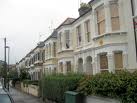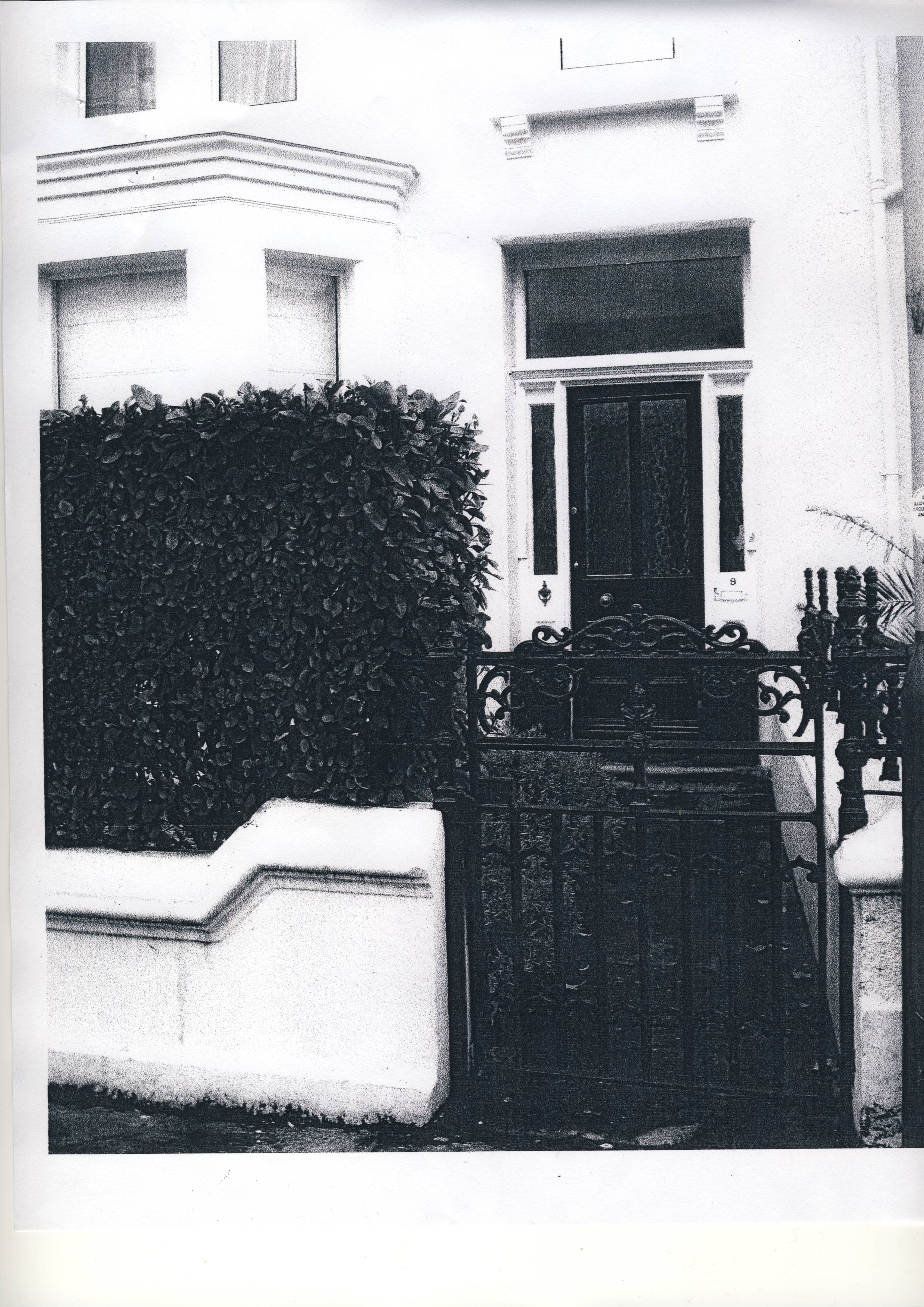

Above, the exteriors of Victorian middle class homes.
Above, the Wighton's home in the Isle of Man to which they retired.
| Social Classes in Victorian Britain (1837-1901) |
 |
 |
| Above, the exteriors of Victorian middle class homes. |
Above, the Wighton's home in the Isle of Man to which they retired. |
|
The technology of the Industrial Revolution continued to have a great impact on Britain’s society during the Victorian era (1837-1901). We’ve already seen how the Agricultural Revolution resulted in crofters being pushed off their little plots of land and forced to relocate in the growing cities such as Dundee. Meanwhile, inventions were allowing new industries to develop and these served to give employment to the displaced workers – for example, the jute mills in Dundee. Meanwhile, in other areas of the country, mining became a major new industry as a race was on to extract the coal and other raw materials needed to fuel the Industrial Revolution. This manifested itself in Western Scotland with a rise in production of steel and ship making. All of these changes had a huge impact on Britain’s social structure. The relocation of the rural poor into the cities became an unavoidable part of the urban society and their existence and plight could not be ignored. Meanwhile, the aristocracy’s wealth had been based on land ownership, but this became increasingly less important in Britain as industrialization made large profits for entrepreneurs who began to assume more and more important positions within high society. And, between these two extremes, a growing middle class began to enjoy the benefits of increased wealth. The British class system created an intricate hierarchy of people which contrasted the new and old rich, the skilled and unskilled, the rural and urban and many more. The Aristocracy The Victorian era began with the elite in total control of British society and its government. The Elite Class was made up of about 300 families who had been firmly established as the traditional ruling class for generations. They were landed gentry and so did not have to work, instead their lives revolved around valuing luxury, enjoying their leisure, and exercising their divine right to rule society. The world of the upper class was so entirely different from that of the lower class (they were, in a real sense, living in another world), that among the wealthy, there was little understanding for the poor. Because there was little understanding, there was often little sympathy, and rarely any really meaningful attempts to make the lives of the lower class any more pleasant. Of all the classes, the aristocracy changed the least during the Victorian era. Even in an age of democracy, the elite retained power. The notable politicians came from noble families. Within parliament, as late as 1880s, more than half of the 652 MPs elected to the House of Commons were nobles, baronets, and landed gentry. (For much of this period, voting privileges were extended only to those men who owned homes.) The unelected House of Lords was, by definition, full of aristocrats. The strength of the aristocracy was its flexibility and its ability to absorb new blood – and new money – into its ranks. When financial crises began to impact their wealth, they opened up their ranks to the wealthiest of the middle class and allowed them to buy a place within their society. Between 1886 and 1914, some 200 new peerages were created for bankers and industrialists. Aristocrats also made astute marriages with wealthy British and American families. (American heiress Consuelo Vanderbilt married the 9th duke of Marlborough in 1895 injecting a much needed $2.5 million into the family’s coffers). The aristocrats also headed Britain's social life. On their country estates, they enjoyed hunting, shooting and fishing. Their grand London homes, open during the 'season', were mind-bogglingly palatial. Often inspired by Italian Renaissance architecture, they boasted huge columns and grand staircases, decorated with masses of gold, marble and crystal. Dazzling lights illuminated this wonderland; tables groaned with mountains of flowers and sweetmeats. The ostentatious houses of the rich were temples that flaunted wealth. Showy display was everything. To protect all this, Robert Peel's police force made sure that poor people were not allowed into Piccadilly or Pall Mall. The Middle Class The Victorian middle-class was largely associated with the growth of cities and the expansion of the economy. The term was used from around the mid-eighteenth century to describe those people below the aristocracy but above the workers. In 1850, the middle class was a fairly small group of professionals, factory owners, businessmen, merchants and bankers. However, as the economy expanded, so did the middle class until by the end of the century, it represented a broad band of the population. Alongside the businessmen associated with the growth of manufacturing, the period saw the increased numbers of small entrepreneurs. Shopkeepers and merchants who undertook to transport and retail the fruits of industry and empire. The increased scale of industry and oversees trade, together with the expansion of empire fuelled the proliferation of commerce and finance such as banks, insurance companies, shipping and railways. This system needed administrating by clerks, managers and salaried professionals. The expansion of cities, towns and the economy produced new spaces that needing regulating and running. The Victorian period witnessed the massive expansion of local government and the centralised state, providing occupations for a vast strata of civil servants, teachers, doctors, lawyers and government officials as well as the clerks and assistants which helped these institutions and services to operate. Over time, the middle class split into two different layers stratified by earnings – upper middle class and lower middle class. The UPPER MIDDLE CLASS was composed of professionals and industrialists. The professionals – doctors, lawyers, clergy and top civil servants – were educated at public school and university. They lived in suburban villas and their ethos was hard work and no play. By contrast, the industrialists were self-made men who passed on the business to their families. They usually sent their children to be 'educated' in the family firm, or trained them to become engineers. The upper middle class’ dream was to become part of the aristocracy. The LOWER MIDDLE CLASS was made up of shopkeepers, merchants, business men, professional managers, and as the government passed more laws, civil servants, who worked in both central and local government. In such a broad swath of people, it is difficult to talk of the middle class having a coherent outlook. But one underlying theme was the idea of the self-made man. Similar to the American Dream, the idea was that if one worked hard enough, all men could become wealthy and own land. However, personal contacts and supportive connections were important in establishing a business or in gaining entry to a profession. Other values were progress, religious piety, thrift, prudence, hope, honesty, decency, family, class consciousness, and self-reliance and personal achievement as opposed to privilege and inheritance. Being middle class was defined by taking responsibility for one's self, one's family and the community but the precise terms of this were open to individual interpretation. The middle class came to dominate life because of the new enthusiasm it generated among the growing population. The new middle class was often overtly materialistic and enjoyed showing off its wealth through houses filled with expensive furniture, wall coverings, paintings, etc. Stiff competition became a normal facet of life not reserved for business, but in all of society; the winner would be the person who could keep up with the Joneses. In this way the Victorian Era laid the foundation for the modern mass consumption economies of the western world. An underlying theme for the middle class was self-improvement, often reinforced by local voluntary societies (e.g., temperance). Personal narratives of success were an important part of this culture. Individualised narratives of great men building fortunes from nothing became a staple part of Victorian middle-class culture. The growing middle class' appetite for personal improvement to match its new wealth lead to an explosion in the sale of self-help books. Dealing with increased leisure time afforded by growing wealth became important. Leisure for this class had to be not only respectable but also productive — good both for the soul and for the country as a whole. Leisure and recreation above all had to be rational. Facilities for mental improvement were developed with middle-class assistance. Simple academic instructions and debates were provided on an mutuality basis or by the new working men's clubs, institutes and a wide variety of Friendly societies. Money was another important factor in leisure, and the middle class used its business and organisational skills to great effect to establish athletic clubs. Pooling together members' resources enabled the purchase of grounds and buildings for leisure activities; golf, cricket, rugby, and tennis clubs all exemplify this trend. Football was codified with the ideological objective of engendering the principles of obedience to given rules, discipline, hygienic living, teamwork, masculinity, and a projection of a national identity. Ordered football was meant to gather society together in a common pursuit, bringing together players and gentlemen alike. Early football grounds were provided by and for local industries or middle-class associations. But as the popularity and its commercial potential became apparent, grounds and stadiums developed at a rapid rate, whereby nearly every town, city or village in Britain boasted a purposely constructed football ground or stadium. The Lower Classes The British lower class was divided into two sections: the working class (labourers), and the poor (those who were not working, or not working regularly, and were receiving public charity). The WORKING CLASS included men, women, and children performing many types of labor, including factory workers, seamstresses, sweepers, miners, and the like. From 1860 to 1900, the real wages of the employed working classes almost doubled. At the same time, they had fewer kids. The combination of more money and smaller families meant that the respectable working classes (also known as the deserving poor) had more time for leisure. But, while life was getting better for the solid working class, the poor were as desperate – and numerous – as ever. This 'lowest class' comprised about a quarter of urban populations who were in deep poverty and living in squalid, even deadly slum conditions. Some of these people were unemployed, some were criminals, all lived a precarious existence. Many ended up in the workhouse. Rural poverty was even worse. Poor crofters in the Scottish Highlands had to survive on as little as £8 a year. Child labour and poverty were common. Women were forced to give their children opium so they wouldn't make any noise while they laboured in the fields. When times were bad and work ran out – as it did when the imports of cheap wheat and of cheap wool destroyed traditional agriculture in the 1880s, these people had no choice. They had to leave the land and migrate to the booming cities or starve. Sources Various web sites, including: The Development of Leisure in Britain after 1850: http://www.victorianweb.org/history/leisure2.html The Rise of the Victorian Middle Class: http://www.bbc.co.uk/history/british/victorians/middle_classes_01.shtml Time Traveller's Guide to Victorian Britain: http://www.channel4.com/history/microsites/H/history/guide19/part05.html Victorian Morality: http://en.wikipedia.org/wiki/Victorian_morality |